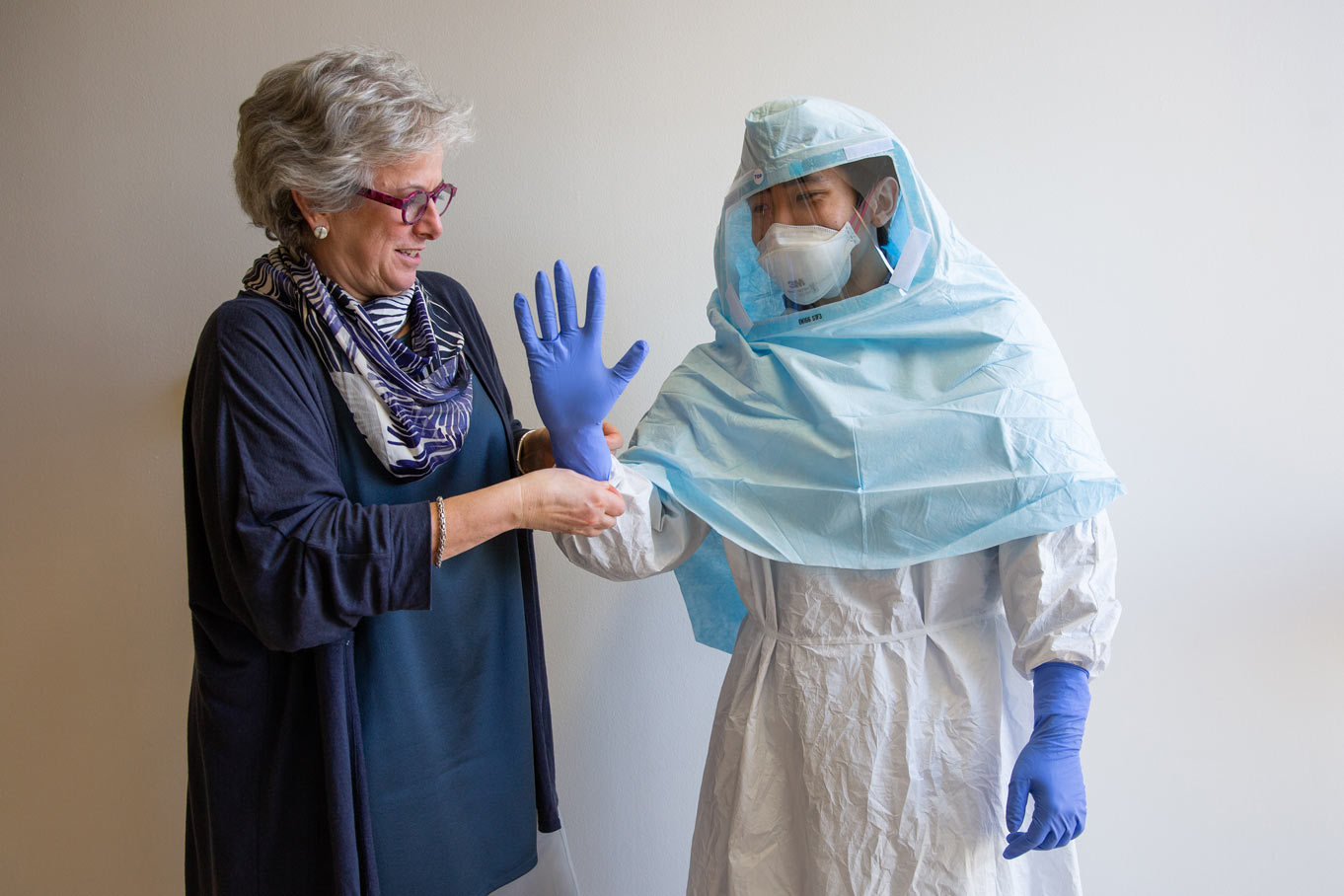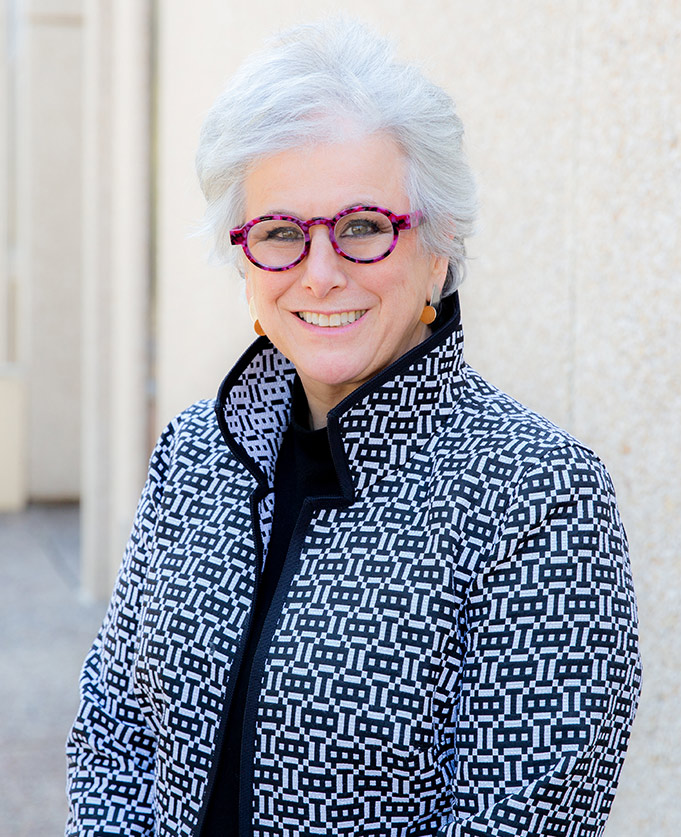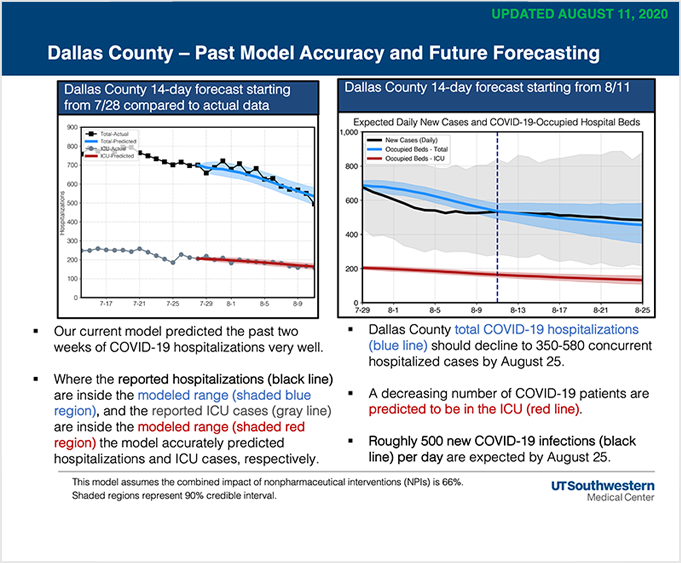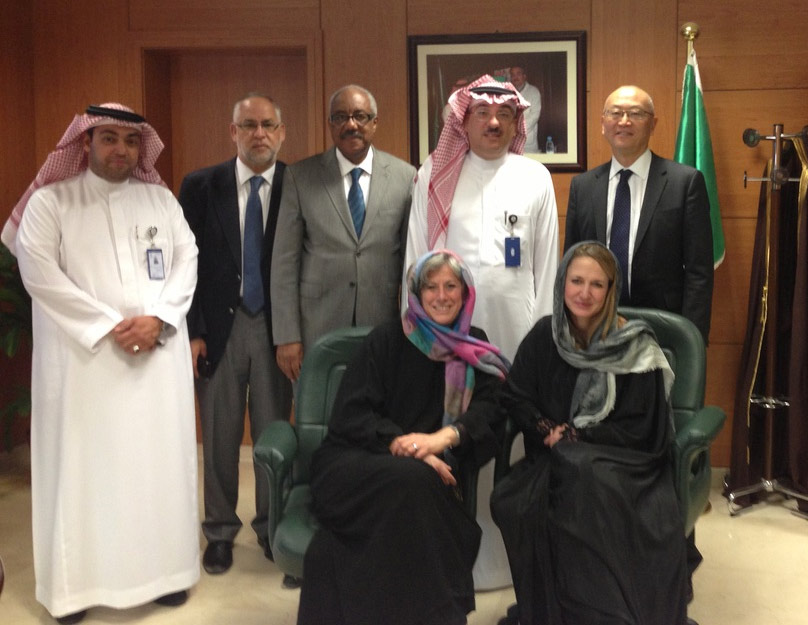An investigator on the trail of killer viruses

Dr. Trish Perl has traveled the world advising nations and health care workers during contagious disease outbreaks. The infectious disease specialist flew to the Democratic Republic of the Congo to show medical workers ways to stem Ebola’s spread. Earlier, as the world saw the rise of dangerous new coronaviruses, she went to Toronto to help hospitals prepare to isolate and treat patients during the outbreak of SARS (severe acute respiratory syndrome). And she spent almost two weeks in Saudi Arabia when yet another respiratory syndrome coronavirus, MERS (Middle East respiratory syndrome), struck in 2013.

These days, she works from her home base at UT Southwestern Medical Center, where she advises and tracks the spread of the latest novel coronavirus, SARS-CoV-2, which attacks the respiratory system and causes the disease COVID-19. As of mid-August, more than 5 million cases had been reported in the U.S. as efforts continued to stop the pandemic’s spread.
“People like me have SARS and MERS under our belts,” says Dr. Perl, Professor of Internal Medicine and Chief of the Division of Infectious Diseases and Geographic Medicine. “This virus is acting a lot like both of them.”
Fortunately, it differs from its predecessors SARS and MERS in one important respect: The fatality rate is much lower. While almost 10 percent of those diagnosed with SARS died and MERS claimed 30 to 40 percent of people with that disease, recent estimates of the U.S. COVID-19 fatality rate have ranged from 3.3 percent to less than 1 percent.
Given Dr. Perl’s role at the forefront of researching coronaviruses – and studying ways to protect health care workers as they treat infected patients – we asked the busy professor, researcher, and administrator a few questions about her experiences.
Tell us about your involvement in efforts to combat the COVID-19 virus.
My efforts have focused on education around epidemics/pandemics, the risks associated with coronaviruses and novel coronaviruses, and the risks in health care, as well as on how to reduce risk.
I have tried to reassure health care workers and the public, describing ways people can lessen the risk of transmission and sharing information with The New York Times and other news outlets about the importance of actions as simple as proper hand-washing. Just washing your hands (or using alcohol-based hand rub) can reduce your risk of infection by 50 percent.

I’ve also been involved in designing mathematical models to help predict the spread of COVID-19 once nonpharmaceutical intervention (NPI) measures were implemented to “bend the curve,” and to provide health care institutions and the economy with a more manageable surge peak.
The NPIs have prevented many cases, saved lives, and protected hospitals. UTSW has been very influential in highlighting early the potential impact of this pandemic. This information is important if we are to organize the resources and manpower to properly treat outbreaks that occur.
What do you think of the world response to COVID-19 – the closing of businesses, shelter-in-place orders, etc.? Was this unprecedented, or does it harken back to public health responses of the pre-antibiotic era?
Much about the use of NPIs was learned in the 1918 influenza pandemic. These strategies have been implemented since then, such as during the H1N1 influenza pandemic of 2009, the 2014 Ebola outbreak in West Africa, and others.
You were involved in coronavirus research when the MERS virus originated in the Middle East. Can any of the lessons learned from that outbreak be applied to this one?
I was invited by the Saudi government to help investigate the cause of the respiratory disease MERS and how it was being spread. I spent 10 days in Saudi Arabia in 2013 doing that. In the end, it was an education/research institution that identified the virus, which was then traced to camels. After that, the focus became finding a vaccine for the camels, which is ongoing.

One of the difficulties in that outbreak was the early reluctance of the Saudi government to share information about the disease – much as we saw in China in the early days of COVID-19. Fortunately, MERS has not grown into a major pandemic. Through last November, there had been fewer than 3,000 cases since 2012, with less than 900 deaths, according to WHO. The vast majority of those cases have been in Saudi Arabia. Still, this is another example of why it is so important for nations to share information as soon as they spot the emergence of a new, highly contagious, and potentially fatal virus.
What led you to specialize in infectious diseases?
I am not sure what attracted me to the field. I always thought the infectious diseases clinicians were total physicians – caring, empathetic, fantastic clinicians, thoughtful. Maybe it was the Sherlock Holmes nature of discovery in the field – trying to figure out an answer. I enjoy tracking down the viral or bacterial cause of a disease and then researching how to prevent its spread.

My work on how to protect health care workers from becoming infected as they treat patients has been especially rewarding. I watched as those treating Ebola patients in Africa and the hospital workers in Toronto during the SARS epidemic risked their lives to help people suffering from those very contagious diseases. Ebola, which is spread through blood and other bodily fluids, at that time had an average fatality rate of about 50 percent, according to WHO, and health workers in West Africa had 21 to 32 times the general population’s risk of contracting the disease. In Toronto as well, doctors and nurses saw co-workers die. It had almost a post-traumatic stress effect on those working on the front lines.
Knowing this, it has been hard to watch the current COVID-19 pandemic unfold. Health care workers on the front lines are at increased risk of infection because of their exposures, challenges with testing, and shortages of personal protective equipment such as surgical masks and N95 protective respirators.
Tell us about your background and family.
I was born is Syracuse, New York, and grew up in Salt Lake City, Utah, and Chapel Hill, North Carolina, where my father, the late Dr. Edward R. Perl, was a respected neurophysiologist and the Chair of the Department of Physiology at the University of North Carolina at Chapel Hill. He helped found the Society for Neuroscience and served as its first President. My mother, Marjorie Herdt Perl, is an audiologist by training and worked at a time when that was uncommon, likely influencing me. My sister became an architect, while my brother is also a doctor – an interventional neuroradiologist.
I received my medical degree from UNC-Chapel Hill and earned a Master of Science in epidemiology and biostatistics at McGill University in Montreal while a resident and fellow. After a year at the Canadian equivalent of the CDC (Centers for Disease Control and Prevention), I completed my fellowship in infectious diseases and clinical epidemiology at the University of Iowa.

I joined the faculty at the University of Iowa before moving to Johns Hopkins in 1996 as an Assistant Professor of Medicine. I worked there for 20 years, rising through the ranks to become a Professor, before coming to UT Southwestern as Division Director in 2016.
My husband, Dr. Sylvain DeLisle, is also a physician and a fellow faculty member at UT Southwestern. We have three daughters: Dominique is in a Ph.D. program in psychology; Chloé completed Teach for America training and now teaches high school biology; Gaëlle is an infection prevention specialist at Sainte-Justine Hospital in Montreal.
What are your passions when not working?
I like to ski, cook, hike, bike, garden, and travel. I also love music, opera, good wine, and reading.
What would we be surprised to know about you?
I was a ski racer and speak French at home.
What do you consider the most rewarding achievement in your career and why?
Aside from my family, the most rewarding achievement has been the lives I have been able to influence through teaching and mentoring. Whether seeing patients or doing research, it is always the people who surround us that make it fun and worthwhile. If you can help people see a path forward, influence their decision-making, encourage them to go into infectious diseases and/or health care epidemiology – that is rewarding.
Dr. Perl holds the Jay P. Sanford Professorship in Infectious Diseases.

